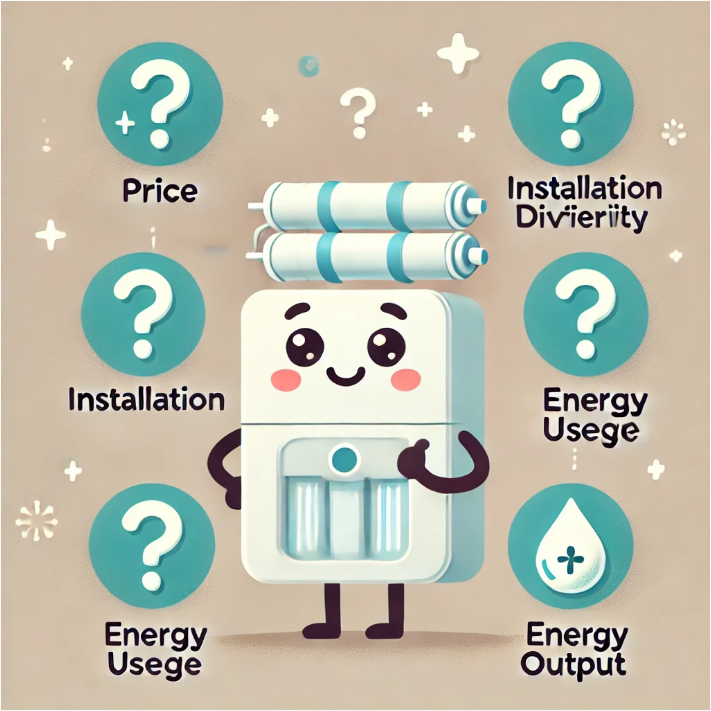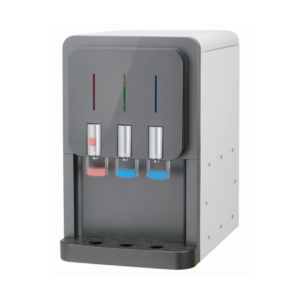
Factors for choosing RO Water Purifier System
Choosing the right RO water purifier system can be a daunting task, especially with so many options available in the market. Each system comes with its own set of features, and understanding these can help you make an informed decision that best suits your needs. In this article, we’ll explore the key factors to consider when selecting an RO water purifier, covering aspects such as power usage, ease of installation, filtration efficiency, and water output.
Understanding Your Water Quality
Before diving into the specifics of different RO water purifier system, it’s crucial to understand the quality of your water supply. The levels of contaminants, such as dissolved salts, chlorine, heavy metals, and microorganisms, can vary significantly depending on your location. Testing your water can help determine the level of purification needed and whether an RO system is necessary.
- High TDS (Total Dissolved Solids): If your water has high TDS levels, an RO system is ideal as it effectively removes dissolved salts, providing you with clean, potable water.
- Presence of Microorganisms: If your water is prone to microbial contamination, choose an RO system that includes UV or UF filters to ensure the complete removal of bacteria and viruses.
Power Consumption
One of the first considerations when choosing an RO Water Purifier System is its power consumption. RO systems typically require electricity to operate, especially if they include additional features like UV sterilization or a water booster pump.
- Electric vs. Non-Electric Models: Electric models offer advanced purification capabilities and are more effective in areas with low water pressure. Non-electric models, on the other hand, rely on gravity and do not require electricity. This makes them suitable for areas with frequent power outages or for those looking to reduce energy consumption.
- Power-Saving Features: Look for RO systems with energy-efficient designs, such as auto-shutoff features, which turn off the system when the storage tank is full, saving both power and water.
Komi-Bright-KB-C25R-100G-Electricity-free-Reverse-Osmosis-Water-Filter-System--300x300.jpg)
Ease of Installation and Maintenance
The ease of installation and maintenance can vary greatly between different RO Water Purifier System. Consider how much time and effort you’re willing to invest in setting up and maintaining your system.
- Installation Complexity: Some RO systems are designed for easy installation and can be set up with basic tools. These typically come with clear instructions and all necessary components. If you’re not comfortable with DIY installation, you may want to opt for a system that includes professional installation services.
- Filter Replacement: RO systems require regular filter changes to maintain optimal performance. Some models feature easy-to-access filter cartridges that can be replaced without the need for professional help, while others might require more effort. It’s also important to check the availability and cost of replacement filters.

Filtration Efficiency and Water Purity
The main purpose of an RO water purifier is to provide clean and safe drinking water. Different systems offer varying levels of filtration efficiency, so it’s important to choose one that meets your specific needs.
- Number of Filtration Stages: RO systems typically feature multiple filtration stages, including pre-filters (to remove larger particles), the RO membrane (to remove dissolved solids), and post-filters (to enhance taste and remove any remaining contaminants). More stages generally result in higher purity, but also consider whether additional stages are necessary based on your water quality.
- RO Membrane Quality: The quality of the RO membrane is crucial for effective purification. Look for systems with high-quality membranes that are certified for performance and durability.
Water Output and Storage Capacity
When selecting an RO water purifier, consider how much purified water you need daily. The water output and storage capacity are important factors, especially for larger households or commercial settings.
- Flow Rate and Output: RO systems can produce different amounts of purified water per hour. If you have a large family or high water usage, opt for a system with a higher flow rate to ensure you have enough water on demand.
- Storage Tank Capacity: Most RO systems come with a storage tank to hold purified water. The size of the tank is important if you need a steady supply of water, especially during peak usage times. Choose a tank size that matches your daily water consumption needs.
Additional Features and Customization
Many RO water purifiers come with additional features that can enhance their functionality and convenience.
- Remineralization: Some RO systems remove beneficial minerals along with contaminants. If you’re concerned about this, look for a system with a remineralization stage, which adds essential minerals like calcium and magnesium back into the water.
- pH Balancing: Some RO systems include a pH balancing feature to ensure the water is not too acidic, which can be beneficial for those concerned about the long-term effects of drinking slightly acidic water.
- Smart Features: Advanced models may come with digital displays, water quality monitors, or app connectivity, allowing you to track filter life, monitor water quality, and receive maintenance alerts.
Cost Considerations
Finally, the cost of an RO water purifier is an important factor for most buyers. It’s essential to consider both the upfront cost and the long-term maintenance expenses.
- Upfront Costs: High-end models with more features and higher filtration capacity will generally cost more. However, they may offer better long-term value in terms of water quality and durability.
- Maintenance Costs: Regular filter replacements and potential repairs should also be factored into your decision. Look for systems with affordable and easily accessible replacement parts.
Conclusion: Choose the right RO Water Purifier System
Choosing the right RO water purifier system depends on your specific needs, including water quality, household size, and budget. By considering factors such as power consumption, ease of installation, filtration efficiency, water output, and additional features, you can find an RO system that offers the best balance of performance, convenience, and value. Remember, the right RO water purifier will not only provide you with clean, safe drinking water but also enhance your overall quality of life.
Frontier is an authorized overseas distributor of several RO water purifier system manufacturers. We provide water systems for residential, commercial and industrial use. And we are able to offer favorable wholesale prices to overseas distributors/retailers. If you need more information, please fill out the comment form or send an email to: info@frontierdiscover.com

